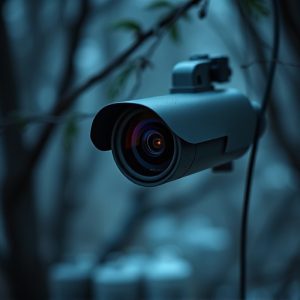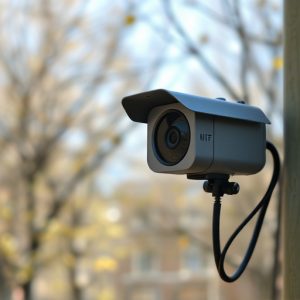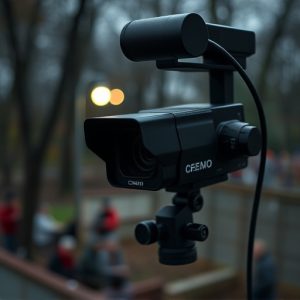Realistic Decoys: Mastering Covert Monitoring & Placement
In today's digital era, organizations require advanced covert monitoring systems to combat evol…….
In today's digital era, organizations require advanced covert monitoring systems to combat evolving security threats. The key component is the most realistic-looking security decoys, which mimic genuine equipment like cameras and sensors without raising alarm. These lifelike decoys confuse intruders, deterring criminal activities and providing response time for security teams. A successful professional guide should detail their selection, deployment, installation guidelines (including weather resistance), maintenance (regular checks and software upgrades), and strategic placement to enhance overall area protection.
In today’s digital era, covert monitoring systems offer businesses an essential tool for enhancing security. This comprehensive guide delves into the professional placement of these advanced surveillance solutions. Understanding the growing need for discreet observation, we explore key components for a successful implementation strategy. From selecting the most realistic-looking security decoys to practical tips for setup and maintenance, this article provides valuable insights for maximizing effectiveness while maintaining operational secrecy.
- Understanding the Need for Covert Monitoring Systems
- Key Components of a Successful Professional Placement Guide
- Choosing the Most Realistic-Looking Security Decoys
- Implementation and Maintenance Tips for Optimal Effectiveness
Understanding the Need for Covert Monitoring Systems
In today’s digital era, security threats have evolved, making it imperative for organizations to implement advanced monitoring solutions. Covert monitoring systems offer a unique approach to enhancing security by providing an invisible yet powerful toolset for protection. These systems are designed to detect and prevent unauthorized activities without raising suspicion, ensuring that sensitive areas remain secure.
The integration of most realistic-looking security decoys is a game-changer in covert monitoring. These decoys mimic real security equipment, such as cameras or sensors, but with the ability to operate discreetly. Their lifelike appearance tricks potential intruders, making it difficult for them to identify and tamper with genuine security devices. This strategic placement of decoys can significantly deter criminal activities and provide valuable time for response teams.
Key Components of a Successful Professional Placement Guide
A successful professional placement guide for a covert monitoring system should be comprehensive yet concise, tailored to both security professionals and end-users. It must detail the key components that contribute to an effective deployment, including selection of the most realistic looking security decoys. These decoys play a crucial role in deterring potential intruders, as they create an illusion of advanced surveillance technology, without actually revealing the true monitoring system’s location or capabilities.
Additionally, the guide should cover installation guidelines, ensuring proper placement for maximum effectiveness. It must also include considerations for environmental factors, such as weather resistance and camouflage options, to seamlessly integrate decoys into various settings. Furthermore, it should offer insights on maintaining and updating the system, highlighting the importance of regular checks and software upgrades for optimal performance.
Choosing the Most Realistic-Looking Security Decoys
When selecting security decoys, prioritizing the most realistic-looking options is paramount for an effective covert monitoring system. These decoys serve as powerful distractions, luring potential intruders while providing critical time and cover for genuine surveillance equipment or personnel. Realistic replicas of everyday items like cameras, sensors, or even human figures can be game-changers in security strategy.
Opting for advanced materials and meticulous craftsmanship ensures these decoys seamlessly blend into their surroundings, making them nearly impossible to detect. This strategic placement can significantly deter would-be perpetrators, creating a false sense of security that strengthens the overall protection of the monitored area.
Implementation and Maintenance Tips for Optimal Effectiveness
Implementing a covert monitoring system requires careful planning and strategic placement for optimal effectiveness. One crucial tip is to use the most realistic-looking security decoys available. These can include fake cameras, signs, and sensors that blend seamlessly into their surroundings, making it hard for intruders to identify genuine security measures. By integrating these decoys with real surveillance equipment, you create an environment where potential threats are more likely to be deterred or detected early on.
Maintenance is another key aspect of keeping your system effective. Regularly update and calibrate your devices, ensuring all components are functioning properly. Keep the software up-to-date to benefit from improved features and security patches. Additionally, conduct routine checks to identify any signs of tampering or vulnerabilities in the system. This proactive approach will help maintain the integrity of your covert monitoring system and provide peace of mind knowing your property is well-protected.
Covert monitoring systems, when implemented with a well-structured professional placement guide, offer businesses an effective way to enhance security. By understanding the need for these systems and selecting the most realistic-looking security decoys, organizations can maintain a safe environment. Following the key components and implementation tips ensures optimal effectiveness, allowing businesses to navigate potential threats seamlessly.


